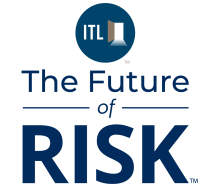In 2025, underwriting is at a pivotal moment. The traditional image of underwriters buried under mountains of paperwork is fading, replaced by a new reality: a deluge of data. Today's professionals are navigating an overwhelming flood of information from disparate sources—IoT sensors, social media, satellite images, and traditional reports. All while grappling with outdated, siloed systems. The challenge isn't the lack of data, but rather making sense of it. Underwriters are tasked with extracting valuable insights to accurately assess risk, but the sheer volume and fragmentation of data often hinder, rather than help, their efforts.
Success ultimately depends on understanding the data and its context to close the right business, faster. Organizations that use AI and process orchestration to surface hidden risks and address blind spots can gain an advantage in assessments.
The data integration dilemma
Despite the availability of data, many insurers still operate with a fragmented view of applicant risk. According to McKinsey research, the commercial P&C insurance industry has underinvested in technology, leaving staff to spend between 30% to 40% of their time on administrative tasks, such as rekeying data.
Underwriters lose valuable analysis time chasing down documents across systems and sifting through emails, spreadsheets, and PDFs. While experienced underwriters often know what to look for and can quickly identify gaps, many of these professionals are nearing retirement. The National Association of Mutual Insurance Companies projects that up to 50% of current underwriters will retire by 2028, and fewer new professionals are entering the field. Employers must find ways to retain that institutional knowledge to set up new hires for success.
Where AI can move the needle
AI is beginning to close the gap between what is theoretically possible in underwriting and what is practically achievable when partnered with a human expert.
Consider a common life insurance scenario: An underwriter receives an attending physician statement spanning 1,500 pages or more. A person may need hours or days to review such a document. However, AI can scan the document in seconds, extract relevant details, flag anomalies, and present a clear summary for human review.
Beyond efficiency, AI brings consistency across a staff of varying experience levels. It supports newer underwriters in making well-informed decisions by flagging missing information, spotting patterns from previous cases, and suggesting next steps. The collective use by staff also helps fine-tune the AI tools, making them more effective over time.
However, highly regulated industries, including insurance, must implement AI responsibly and transparently. The most effective approach embeds AI into defined process workflows where every action is traceable, explainable, and auditable.
Real-world applications of underwriting modernization
Aviva was founded in 1996, but its roots go back over 320 years and encompass more than 750 insurance institutions. Each absorbed acquisition brought its own products, systems, and silos for the company to deal with. Aviva's pension business felt this most acutely until it automated over 160 processes and consolidated 22 legacy systems into one streamlined interface. However, the company didn't want the expense of ripping and replacing each system. Instead, Aviva opted for a unified platform, robotic process automation, and digital signature tools, which now executes more than 3.8 million automated transactions every year with a 99% success rate. Pension transfer requests that once took weeks can be completed in hours.
Streamlining back-office functions had a direct impact on front-line service, with the call center benefiting most immediately. Agents no longer had to dig through each legacy system to answer customer questions because the platform offers them a 360-degree view of all their products. Customer service response times were nine times faster than the old setup, and query calls dropped by 90%. The company also saw a 40% reduction in operational costs.
CNA, one of the largest commercial insurers in the U.S., is known for its high-touch service. But managing its multinational business proved difficult across time zones, languages, and disconnected systems. Underwriters faced delays digging through emails, Excel files, Lotus Notes, and SharePoint just to find the information they needed.
To solve this, CNA launched a low-code, cloud-based platform that unifies the entire servicing process, infusing it with data integration and automation. Now, whether in Shanghai or Los Angeles, employees access the same real-time data. Since the platform's launch, CNA saw a 60% reduction in processing time for thousands of local insurance transactions and between 20 and 30% annual growth in the number of international policies it manages.
In each case, underwriters now focus on higher-value work—like client engagement, pricing strategy, and program innovation—rather than chasing down data across systems.
Underwriting at a crossroads
Underwriting is evolving from an industry powered by static data and institutional memory to one based on real-time intelligence and system-wide visibility.
This evolution enables underwriters—regardless of experience level—to work more efficiently, make better decisions, and operate more consistently. Well-designed tools do not just automate manual tasks; they expand what underwriters can achieve.
Insurers leading this transformation are already seeing results: faster quote-to-bid cycles, deeper risk insights, and better customer outcomes. Ultimately, these improvements translate to closing more of the right business, scalability for market expansion, and providing the right tools for underwriting success.






